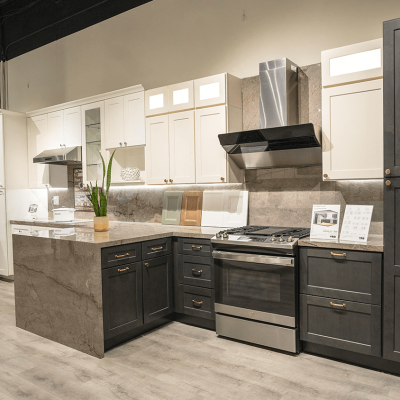The Ultimate Guide to DIY Kitchen Cabinets: Crafting a Custom Space

Designing and building your own DIY kitchen cabinets is an exciting and rewarding project that allows homeowners to create a custom space tailored to their needs. Whether you’re looking to save money, personalize your kitchen, or take pride in your craftsmanship, a DIY cabinets project is a fantastic way to enhance your home. With expert guidance from DIY consulting, you can ensure a smooth, efficient process that results in high-quality, durable cabinets.
Why Choose DIY Kitchen Cabinets?
Opting for DIY kitchen cabinets comes with several benefits, making it a popular choice among homeowners and renovators.
-
Cost-Effective: Custom cabinets can be expensive, but building your own significantly reduces costs while maintaining quality.
-
Personalization: Choose materials, finishes, and designs that match your style and functionality needs.
-
Satisfaction & Skill Development: Completing a DIY project enhances your craftsmanship and provides a sense of achievement.
-
Sustainability: Control the materials used to ensure environmentally friendly and non-toxic options.
Getting Started: Planning Your DIY Cabinets
Before diving into the project, careful planning is crucial. Here’s a step-by-step approach to ensure success.
1. Define Your Kitchen Layout
Measure your kitchen space accurately and determine where each cabinet will go. Consider the placement of appliances, countertops, and storage needs.
2. Choose the Right Materials
The type of wood or material you select will impact durability and aesthetics. Popular options include:
-
Plywood: Durable and cost-effective
-
MDF: Smooth and easy to paint
-
Hardwood: Premium quality with long-lasting appeal
3. Design Your Cabinets
Using DIY consulting, you can create precise cabinet blueprints or leverage design software for accurate measurements. Consider factors like:
-
Number of shelves
-
Drawer vs. door options
-
Soft-close hinges and slide mechanisms
4. Gather Tools & Supplies
Essential tools for building DIY cabinets include:
-
Saw (circular or table saw)
-
Drill and screws
-
Wood glue and clamps
-
Measuring tape and level
-
Sandpaper and paint/stain
Step-by-Step Guide to Building DIY Kitchen Cabinets
Once you have your plan, materials, and tools ready, follow these steps to bring your kitchen cabinets to life.
Step 1: Cut Your Wood Pieces
Use a saw to cut the panels for the cabinet box, doors, and shelves according to your measurements.
Step 2: Assemble the Cabinet Box
Secure the sides, top, and bottom using wood glue and screws. Ensure all edges are flush and even.
Step 3: Install Shelves and Back Panel
Attach shelves at your desired height, using support brackets or pre-drilled holes for adjustability. Secure the back panel for structural integrity.
Step 4: Attach Doors and Hardware
Use hinges to attach doors evenly, and install handles or knobs for a professional touch.
Step 5: Finishing Touches
Sand the surface, apply primer, and finish with your choice of paint or stain for a polished look.
Common Challenges and How to Overcome Them
DIY projects can come with obstacles, but with proper preparation and DIY consulting, you can tackle these challenges effectively.
-
Measuring Errors: Always measure twice before cutting.
-
Uneven Doors or Drawers: Use a level to ensure precision.
-
Paint or Stain Issues: Apply thin, even coats and allow proper drying time.
-
Hardware Installation Mistakes: Mark drill points beforehand for accurate alignment.
Why DIY Consulting is Essential for Success
While DIY projects allow for creativity and customization, professional DIY consulting can help streamline the process, ensuring quality results. Consultants provide:
-
Blueprints & Plans: Professional layouts to maximize space efficiency.
-
Material Recommendations: Guidance on the best materials for durability and aesthetics.
-
Troubleshooting Tips: Solutions for common DIY cabinet challenges.
-
Time-Saving Techniques: Advice on efficient building strategies to minimize mistakes.
Maintaining Your DIY Kitchen Cabinets
To keep your DIY kitchen cabinets looking and functioning their best, follow these maintenance tips:
-
Regular Cleaning: Wipe down surfaces with a damp cloth and mild cleaner.
-
Avoid Water Damage: Use sealants and avoid excessive moisture exposure.
-
Check for Loose Hinges or Handles: Tighten screws periodically to prevent wear.
-
Repaint or Reseal as Needed: Touch up finishes to maintain a fresh appearance.
Final Thoughts
Building DIY cabinets is a fulfilling project that adds value to your home while reflecting your personal style. With the right tools, guidance, and DIY consulting, you can create stunning, durable cabinets tailored to your kitchen needs.
Ready to start your DIY kitchen cabinet project? Get expert DIY consulting today and turn your vision into reality with precision and confidence.
- Fashion
- Art
- Causes
- Crafts
- Dance
- Drinks
- Film
- Fitness
- Food
- Games
- Gardening
- Health
- Home
- Literature
- Music
- Networking
- Other
- Party
- Religion
- Shopping
- Sports
- Theater
- Wellness
